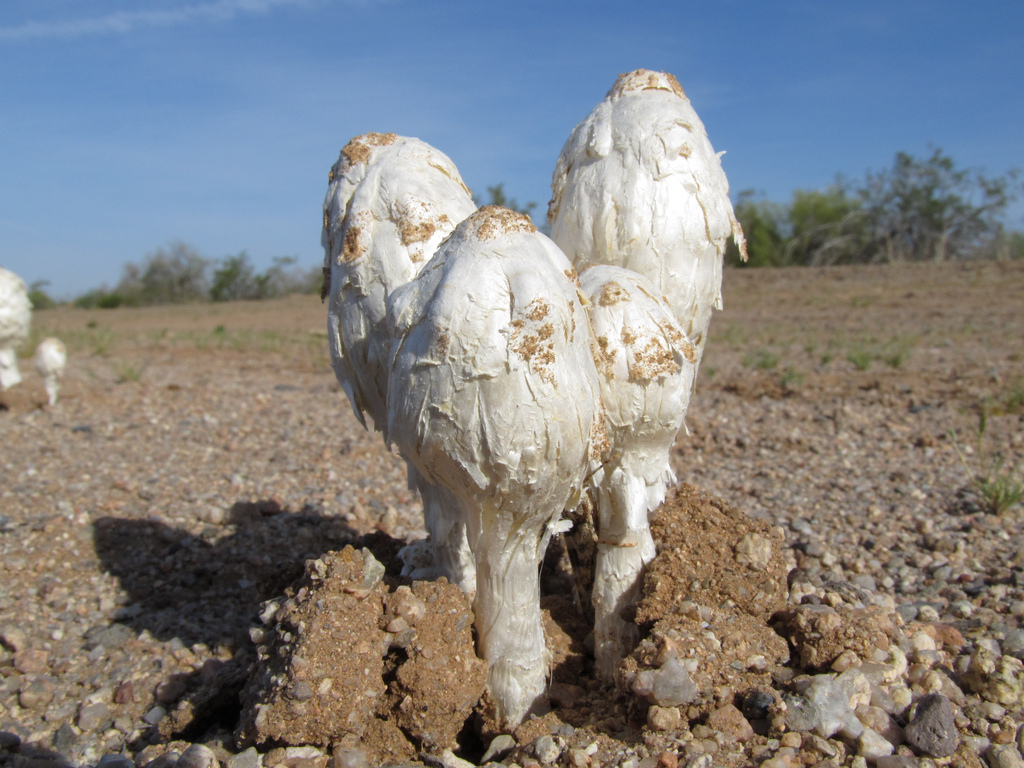Desert Shaggy Mane: Red Data Book of Armenia

Category. VU– Vulnerable.
Brief description. Fruit bodies are up to 25 cm long. Peridium is 3–6 x 1–3 cm, egg–shaped or ellipsoid. Exoperidium is scaly, usually falls when mature. Endoperidium is thin, the outer layer is white and leather–coloured, sometimes rusty, at first smooth, shiny or filamentous, wrinkled then ruptured. Stipe is 5–7 x 0,2–7 cm covered with white, brittle, twisted, with fastly abolishing scales, at the base bulbous thickened, sometimes with remnants of the volva. Young gleba is white, reddish–brown when mature. Hypha of the capillitium is olive–coloured, reddish–brown or brown, with septa, well developed, slightly branched walls. Spore print is dark brown. Spores are 7–16 x 7–12 µm, dark brown, oviform, ellipsoid or spherical with germ–pores, smooth).
Distribution. Generally in Asia, Africa, Northern America, Australia, Southern Caucasus (Armenia). It is widely spread in tropical and subtropical zones, rarely in steppes. In Armenia the unique examples of this species are discovered only in arid zone of Yerevan floristic region in the territory of "Khosrov" State Reserve. According to paleonthological data it belongs to relict species of Cretaceous period.
Ecological, biological and phytocenological peculiarities. It is met in rocky areas, on the sands, on the altitude of 1200–1700 m above sea level, during dry, hot weather in the month of May. Saprotrophic or psammotroph fungi on sands.
Main factors of endangering. Not examined.
Nature conservation measures. It is conserved in corresponding ecosystems of "Khosrov" State Reserve. It is necessary to carry out monitoring of the state of the known populations and discovery of new biotopes.
Suggestions
 The Ministry of Environment sent a letter international partners to draw their attention to the real danger of environmental disasters as a result of Azerbaijan's large-scale aggression towards the territory of Armenia
The Ministry of Environment sent a letter international partners to draw their attention to the real danger of environmental disasters as a result of Azerbaijan's large-scale aggression towards the territory of Armenia
 Vicia pisiformis: Red Data Book of Armenia
Vicia pisiformis: Red Data Book of Armenia
 Vavilovia formosa: Red Data Book of Armenia
Vavilovia formosa: Red Data Book of Armenia
 Trigonella capitata: Red Data Book of Armenia
Trigonella capitata: Red Data Book of Armenia
 Trigonella astroides: Red Data Book of Armenia
Trigonella astroides: Red Data Book of Armenia












